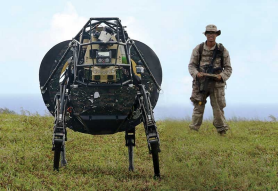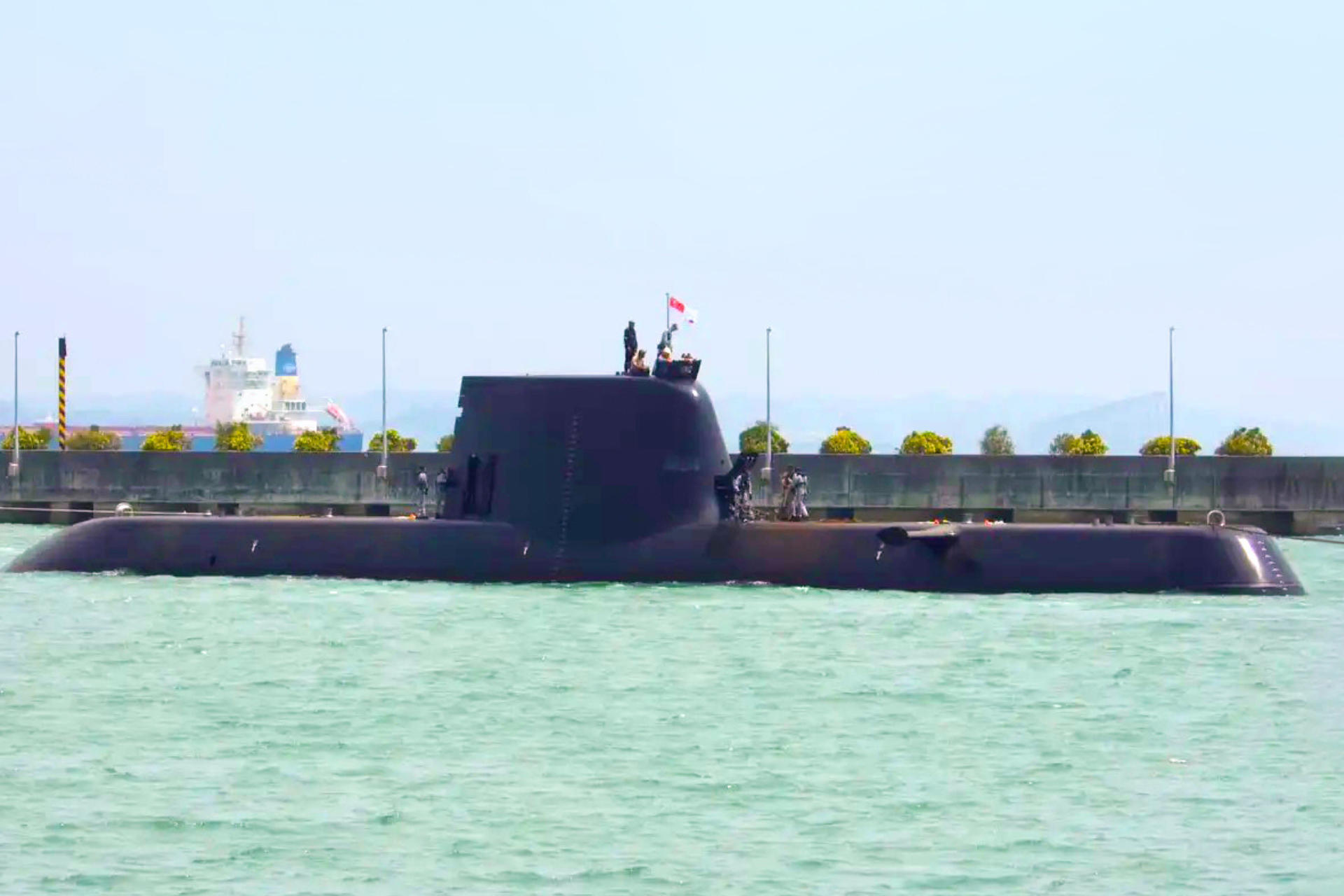A SPECIAL BREED OF SOLDIER
PHOTO // Courtesy Of Defence Video and Imagery Distribution System
Man's best friend has recently been given a complete overhaul - meet BigDog and his family.
At 110kg, BigDog is roughly triple the weight of a typical military German Shepherd or Belgian Shepherd. In place of fur, it has a hard mechanical exterior. And where dogs have muscles, BigDog has hydraulics.
It's not exactly cute and fluffy, but this electronically powered and hydraulically actuated robo-dog may not be all that different from its furry brethren. Google, under its robotics subsidiary Boston Dynamics, has produced a whole family of quadruped robots (which BigDog is a part of) that can run, climb stairs, and even jog next to its owners or operators.
Evolution of the robo-dog
In 2005, BigDog was unveiled by Boston Dynamics in collaboration with Foster-Miller, the NASA (National Aeronautics and Space Administration) Jet Propulsion Laboratory, and the Harvard University Concord Field Station.
Designed as a robotic pack mule to accompany soldiers in terrain too tough for conventional vehicles, BigDog stands at 0.76m tall and 0.91m long.
It is powered by a 15-horsepower go-kart engine which operates at over 9,000rpm. The engine powers a hydraulic pump which in turn drives the hydraulic leg actuators. Each of Bigdog's four legs has four actuators - two for the hip joint, and one each for the knee and ankle joints.
With this power plant, BigDog is capable of traversing difficult terrain, running at 6.4 kmh, carrying 150kg, and climbing a 35-degree incline.
In the place of eyes and ears, BigDog has approximately 50 sensors. These measure a multitude of factors such as the attitude and acceleration of its body; the motion and force of joint actuators; as well as the engine speed, temperature and hydraulic pressure of the internal engine.
These sensors feed information to the onboard computer, which performs a variety of functions such as control, data communication, communications, and electric power distribution.
To control BigDog, the operator wears a Vest Operator Control Unit (OCU), which comprises a Head Mounted Display and an OCU computer on the vest. The operator can input controls on a steering controller which is then transmitted to BigDog over a 900 MHz radio.
The operator also has the option of wearing retro-reflective markers, allowing BigDog to use its light detecting and ranging component to detect the operator and follow autonomously at a distance without needing control inputs.
The bigger brother
Recently, an even more militarised and rugged version of BigDog known as the Legged Squad Support System (LS3) was put to the test at the Rim of the Pacific (RIMPAC) Exercise 2014, a military multilateral training event featuring 22 nations and about 25,000 personnel.
Compared to BigDog, the LS3 has greater operational tolerances - withstanding greater temperature ranges as well as wetter and dirtier environments - and has the ability to carry up to 180kg of equipment.
To allow soldiers to focus more on their mission at hand, the LS3 has been programmed to recognise voice commands from its operator.
For example, the command "engine on" activates LS3, while the command "follow tight" orders LS3 to follow the same path that its operator takes.
At RIMPAC 2014, an LS3 unit had been attached to the United States (US) Marines from India Company, 3rd Battalion, 3rd Marine Regiment at the Kahuku Training Area.
Affectionately nicknamed "Cujo" by the company, the LS3 was used by the Marines to conduct resupply missions to various platoons in terrain that is difficult to reach by all-terrain vehicles.
"I'd say 70 to 80 percent of the terrain we go through, it can go through," said Lance Corporal Brandon Dieckmann, one of Cujo's operators.
"There are times when it is going to fall over, but most of the time it can self-right and get back up on its own."
"I thought it was going to be stumbling around and losing its footing, but it's actually proven to be pretty reliable and pretty rugged (although) it has a bit of a problem negotiating obliques and contours of hills," he added.
"I was surprised how well it works."
While these robo-dogs are still in the experimental stage, don't be surprised if mechanised mutts soon become a soldier's best friend.










